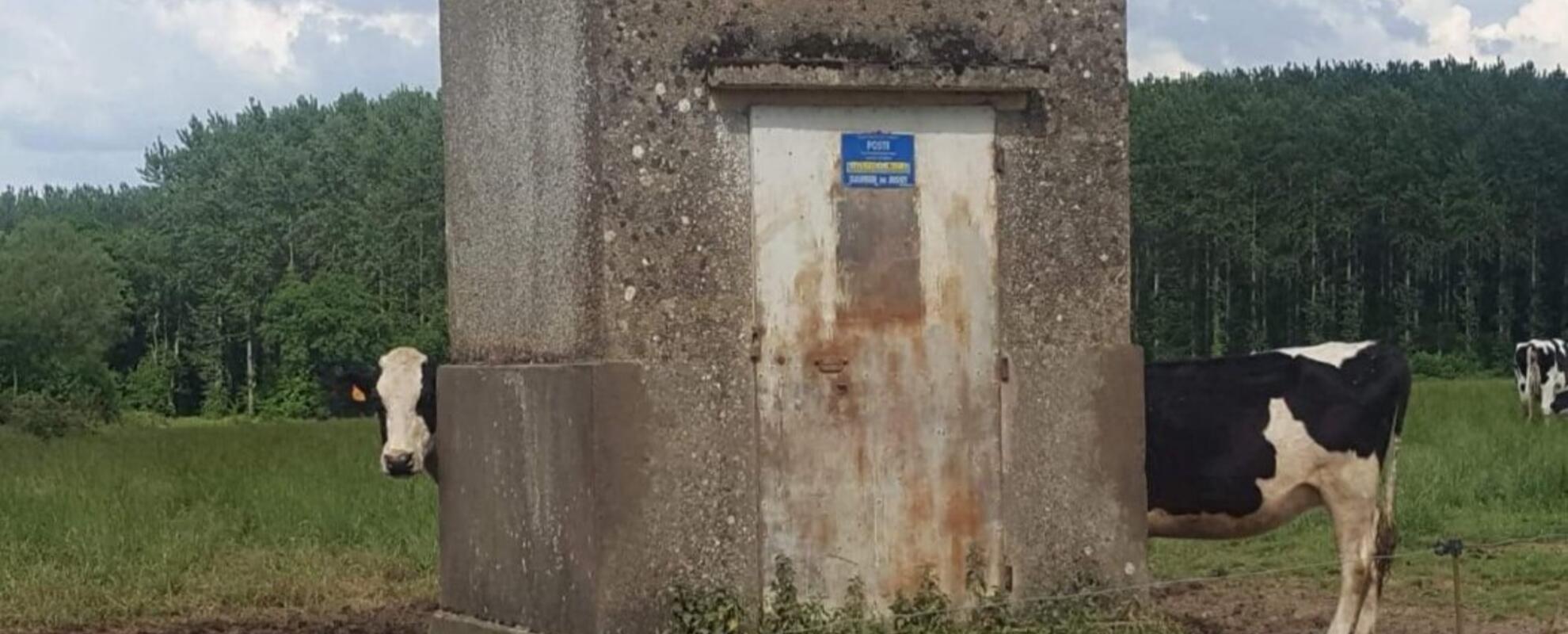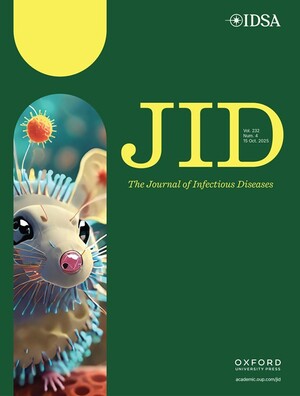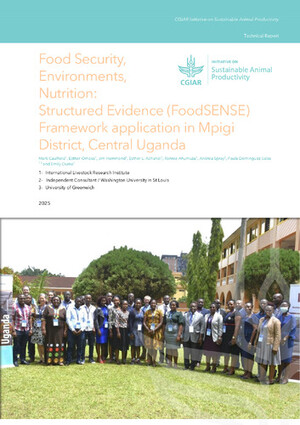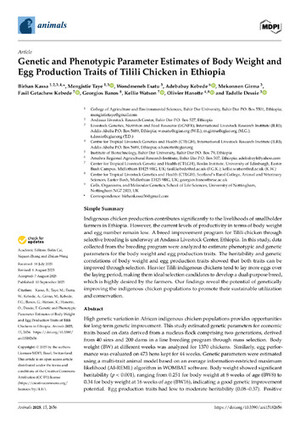
Thursday Links
A monthly round-up of recent articles, blog postings and tweets about livestock, aid and other topics that may be of interest to International Livestock Research Institute (ILRI) staff and partners, compiled by David Aronson.
We start this month with good and bad news from Kenya:
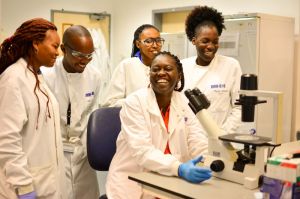
Immunologist Faith Osier. Credit: James Tuju/Kennedy Mwai
Kenyan immunologist Dr. Faith Osier, the first African and second woman to be elected president of the International Union of Immunological Societies, has a bold plan for training 1,000 African scientists in the discipline during the next decade.
A story in Business Daily Africa says that Kenya’s livestock sector is primed to grow exponentially over the next three decades and anchor the country’s food sufficiency amid a rapid rise in the human population.
More and more herders in Kenya are turning to agriculture for extra income, as worsening drought linked to climate change damages the land herders need to feed their cattle.
Kenya’s donkeys could be extinct in four years, says a report by the Africa Network for Animal Welfare (ANAW). Demand for the donkeys is being driven by Chinese use of the skin to make traditional medicine known as ejiao, to which they attribute a wide range of beneficial effects.
Elsewhere in Africa
Breathtaking images of pastoral Nigerian Fulani, by a photojournalist from the Guardian. And from AfricaIsACountry.com, this: ‘How did Fulani herdsmen become such bogeymen in Nigeria?’
Researchers based in Canada and Uganda discuss how Africa can develop the scientific capacity to address the multiple challenges posed by global climate change. Another article in The Conversation discusses how Africa’s science academies can help drive sustainable development. The Center for Global Development discusses how to redress the acute underrepresentation of rigorous research on developing countries and of researchers based in the Global South—the focus is on education but the lessons are generalizable.
The Central Bank of Nigeria has announced that it will no longer relinquish foreign exchange to import any milk. The CBN governor insists there are abundant resources to produce milk in Nigeria.

Birthing model courtesy
Royal Ontario Museum
from Meir, ca. 2030–1917BC.
This ancient Egyptian statue of a cow giving birth is 4,000 years old:
Genetics help solve puzzle of how goats spread through Africa.
Zebras smell bad to tsetse flies—a finding that may help researchers develop an effective repellent to prevent cows from developing trypanosomosis and other diseases that the flies transmit.
Communication tips for scientists
A new online database that provides quick access to the editorial policies of about 2,900 scientific journals aims to dispel much of the mystery and uncertainty in scientific publishing.
It’s time to rethink that staple of science conferences everywhere: the science poster.
From Elsevier: Eleven steps to organize your scientific paper so that journal editors take it seriously.
The AP Stylebook says: ‘Stories about health, science and environment should be written for the public, not for scientists, doctors, investors or policymakers. They must be written in clear language free of jargon. Ask yourself: Would people talk about this story at the dinner table?’
CJR profiles Ruth Reichl, one of America’s leading food writers for over 40 years.

A nice graphic on how 40% of food gets wasted in the US. A good example of how to convey complex information simply and intuitively.
Uganda’s National Agricultural Research Organization (NARO) has created a vocabulary of simplified scientific terms to improve communication about the biosciences.
How to Debate a Science Denier: A new finding shows that marshaling facts and identifying an opponent’s rhetorical techniques are effective at dampening a skeptic’s message. Pew Research, a leading American polling company, finds that more Americans have confidence in scientists, but there are persistent partisan divides.
Farm Radio International is operating in Tanzania to support small-scale farmers having access to knowledge on animal health: a major opportunity to support farmers improve their livestock health.
Is China still a developing country? This article makes the case that it is—but perhaps we need a new set of terms to describe the world beyond neat binaries such as North and South, or rich and poor, or developed and developing.
Alt-Meats
Here’s a nice potted history of lab-cultured meat.
The FDA has approved the Impossible Burger for sale in grocery stores.
Is this the beginning of the end of the beef industry? This journalist from Outside Magazine says that alt meat isn’t going to stay alt for long, and that cattle are looking more and more like stranded assets.
A lovely little story in the New York Times about how an Indian family moved to the US—and developed a secret fondness for cheeseburgers.
Nutrition & AMR
Is it time to rethink the WHO guidance on fatty acids? A new article in BMJ argues that current dietary guidelines to reduce total saturated fatty acids weaken their effect on chronic disease incidence and mortality.
USAID is touting its work on nutrition with an interactive history showing how their work has ‘helped save lives and improve the future for millions of people.’
From Scientific American, an article asking if vegetarian diets are bad for our brains. Do veggies lower creatine levels have a negative impact on cognitive function?
A long article in the New York Times magazine highlights the threat of antibiotics in livestock through the story of swine kidnappers in North Carolina. And more, on how drug-resistant infections from food are growing. The Times alleges that ‘powerful industry interests are blocking scientists and investigators from getting information they need to combat the problem’.
Stunting in low and middle income countries is driven in part by high prices of nutritious foods, says IFPRI.
Forget agriculture, says the Center for Global Development. The future of Africa lies in its cities—and that’s where our aid efforts should be focused.
It’s not just cities in the developing world; even rich, wintry London is ‘crawling with antibiotic-resistant microbes’ says Scientific American.
Animal fat was essential to the evolution of humanity’s big brains—but it might not have been meat we were eating out there on the African plains. Speaking of those plains, it seems humans have been shaping the Serengeti’s ecosystems since the Stone Age.
Climate Change & Food Security
A UN report published last month estimates that more than 120 million people could slip into poverty within the next decade because of climate change, and that it will have the most severe impact in poor countries and regions.
If the amount food grown today doesn’t increase, in 30 years it will only feed half of the world’s population. To increase food security governments and private sectors must help smallholder farmers shift to more sustainable and profitable practices. An article from the World Food Prize outlines what needs to be done.

Source: SGD2 Advocacy Hub
The world is falling way behind its goals for SDG2, ending global hunger. This sobering graphic shows how much of the problem is specific to Africa.
Manipulating gut microbes in livestock could cut methane emissions.
The Soviet Union’s collapse led to massive drop in carbon emissions—as the economic downturn cut into people’s meat-heavy diets.
In California, scientists are working on a carbon-neutral cow, using regenerative farming techniques to sequester extra carbon from the air.
This grocery list from the EAT Forum doesn’t look remotely like anything people in developing countries might find useful, evidence, critics say, that the Universal Reference Diet they proposed was meant for a relatively privileged tranche of the world’s population.
Not that we need another reason to save them, but elephant extinction in Africa would ‘speed up climate crisis by letting more greenhouse gases escape.’
In Brazil, logging and cattle ranching threaten to destroy the Amazon rainforest, says a lead article in The Economist.
A sobering graphic on annual and cumulative greenhouse gas emissions by region, from Our World in Data. Note that Africa’s totals are all but minimal.
Deadly winters have transformed life for herders in Mongolia. A long article in NPR on how devastating snowstorms—likely worsening because of climate change—are threatening pastoralists’ way of life. Some excellent photography too. Meanwhile, reindeer are dying in the arctic, says the Norwegian Polar Institute—also because of climate change.
Miscellaneous
If scientists had logos:

A green and pleasant land
A long cow, from Churchdown, England:
And finally, to lighten your day, a little video of hip-hopping goats.





